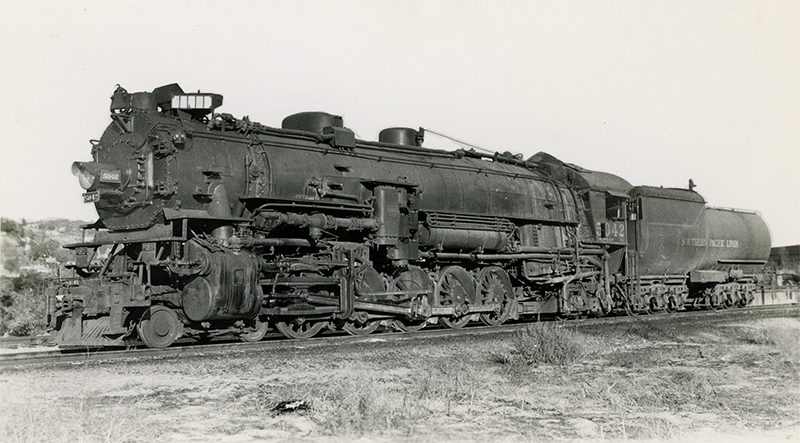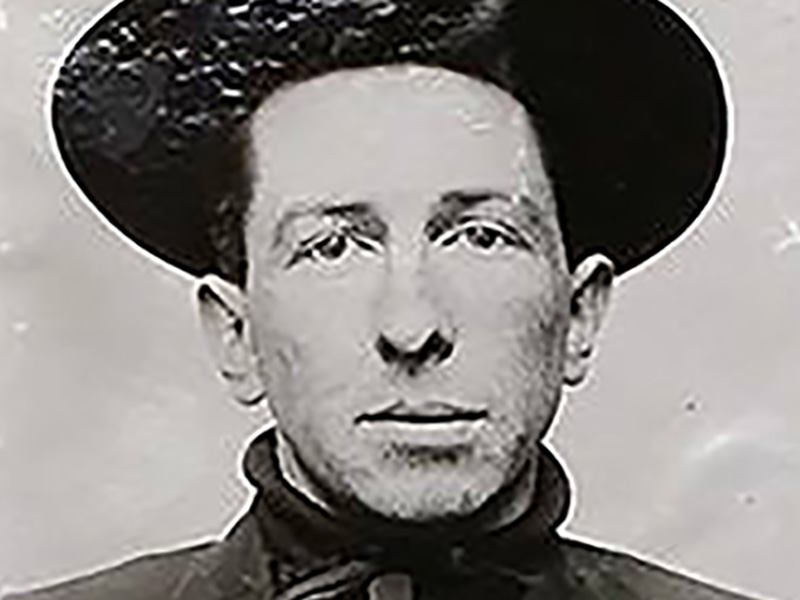|
|


Click image to enlarge
Ever wonder what happened to the Southern Pacific's Engine No. 5042 after Tom Vernon wrecked it behind the Baker Ranch Rodeo in Saugus on the night of Nov. 10, 1929? Well, it lay on its side for a while — SP crews from Los Angeles and Mojave worked through the night to build a shoe-fly (temporary track) around it, and they had trains running early the next morning — but it was eventually lifted by cranes and taken to L.A. for repair. Then it went right back in service on the West Coast Limited, which ran from L.A. to Portland via the San Joaquin Valley, with connecting service to Seattle. Here we see the 5042 in Bakersfield in 1939. Photo by C.C. Grayson of Longview, Texas, a railfan who shot photos of trains all over the country when he wasn't collecting taxes for Gregg County.
No. 5042 was a big, Class SP-3 locomotive with a 4-10-2 wheel configuration, built by American Locomotive Co. (ALCO) in Schenectady, N.Y. Just two years old at the time of the wreck, its weight apparently contributed to its downfall when it hit Tom Vernon's handiwork. Evidence suggests Vernon actually intended to derail the Owl, which came through Saugus minutes earlier. But the Owl used a slightly lighter-weight engine, and it didn't jump the track. Author James E. Boynton writes in "4-10-2: Three Barrels of Steam" (1973:39):
[I]nvestigation showed that the track had been tampered with prior to the passage of the Owl, a Los Angeles-San Francisco overnight all Pullman train which preceded the West Coast Limited by about 15 minutes. This fact was borne out by sectionmen who testified that removal of the spikes would take considerably more time than existed between the schedule time of the two passenger trains. It is rather hard to realize, but No. 25 [the Owl] had evidently negotiated the loosened rail with its 15-car train of Pullmans, without anyone knowing how close to disaster they had actually been. The Owl was powered by a 4300 series 4-8-2 Mountain Class locomotive, which was not quite so rigid or heavy as the big 5000[-series] engine. This fact alone saved No. 25 from being wrecked, and from suffering a fate which could quite possibly have been worse than that besetting the West Coast Limited.
Nobody died in the derailment, but it was touch-and-go with the engineer. Engine No. 5042 remained in service until April 29, 1953, when it was scrapped in Sacramento (Boynton:115). The West Coast Limited made her final run Dec. 7, 1960 (Serpico 2000:25).
LW2926: 9600 dpi jpeg from original photograph purchased 2017 by Leon Worden.
|
Passengers / Earliest Known 11-10-1929
Daybreak 11-11-1929
Newsreel Footage
Loren Ayers x5
Boynton Story
Pollack Story
LAT 11-11-1929
Vernon Captured
Mugshots 12/1929
Extradition 12-12-1929
AP 12-19-1929
REAL: Tom Vernon Prison Records
REAL: Horse Theft 1920
BOGUS: Tom Vernon Letters 1929-1963
BOGUS: Tom Vernon's Fake Photo ID 1962
BOGUS: Vernon's Own Story in 3 Parts
BOGUS: Cattle Kate Story 12-7-1929
BOGUS: Vernon Retells Story in 1953
BOGUS: Sweetwater Incident 1967
BOGUS Sideshow: Lester F. Mead
'Confessor' 11-1929
REAL: Buffalo Vernon 1884-1939
1957-1958 x3
Pardon 1964
Death Cert. 1967
After the Wreck
No. 5042 x3
|
The site owner makes no assertions as to ownership of any original copyrights to digitized images. However, these images are intended for Personal or Research use only. Any other kind of use, including but not limited to commercial or scholarly publication in any medium or format, public exhibition, or use online or in a web site, may be subject to additional restrictions including but not limited to the copyrights held by parties other than the site owner. USERS ARE SOLELY RESPONSIBLE for determining the existence of such rights and for obtaining any permissions and/or paying associated fees necessary for the proposed use.


























